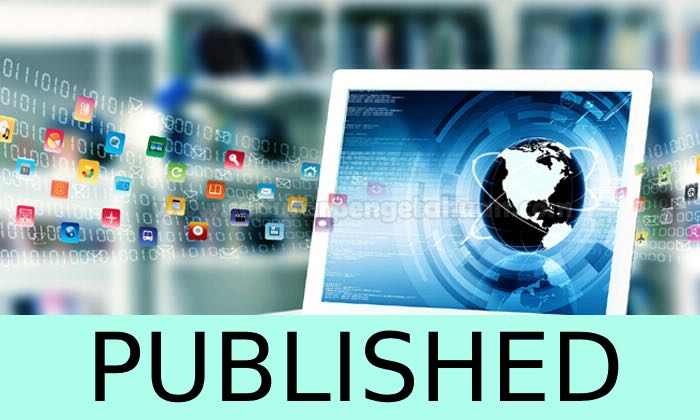EVALUASI APLIKASI MOBILE DESAIN MENGGUNAKAN METODE NIELSEN’S ATTRIBUTES OF USABILITY
EVALUATION OF MOBILE APPLICATION DESIGN USING NIELSEN'S ATTRIBUTES OF USABILITY METHOD
DOI:
https://doi.org/10.36341/rabit.v9i2.4769Keywords:
Usability Evaluation, Nielsen's Attributes of Usability (NAU), Mobile App DesignAbstract
To achieve good software standards, software quality testing is required, including usability. One of the factors that determine software quality is ease of use. In this study, the authors conducted research on the Canva application. This application has been downloaded 100 million times by users on Google Playstore. In this study, the authors used the usability testing method. The data used in this study were obtained through questionnaires and literature studies. The purpose of this research is to find out the results of the usability evaluation of the Canva application. Data was obtained through literature research and Nielsen's questionnaire on usability features. The use of Nielsen's Usability Attributes questionnaire method, which has five indicators: Learnability (easy to learn), Efficiency (efficient), Memorability (easy to remember), Errors (failure), and Satisfaction (satisfaction), the purpose of this study is to determine the results of usability evaluation on the Canva application. Testing with the NAU method gives an average result of 4.02 (Agree) from a rating scale of 5 (Strongly Agree). That is, users agree that the function runs well.
Downloads
Downloads
Published
How to Cite
Issue
Section
License
Copyright Notice
The copyright of the received article shall be assigned to the publisher of the journal. The intended copyright includes the right to publish the article in various forms (including reprints). The journal maintains the publishing rights to published articles. Therefore, the author must submit a statement of the Copyright Transfer Agreement.*)
This work is licensed under a Creative Commons Attribution-NonCommercial-ShareAlike 4.0 International License.
In line with the license, authors and any users (readers and other researchers) are allowed to share and adapt the material only for non-commercial purposes. In addition, the material must be given appropriate credit, provided with a link to the license, and indicated if changes were made. If authors remix, transform or build upon the material, authors must distribute their contributions under the same license as the original.
Please find the rights and licenses in RABIT : Jurnal Teknologi dan Sistem Informasi Univrab. By submitting the article/manuscript of the article, the author(s) accept this policy.
1. License
The non-commercial use of the article will be governed by the Creative Commons Attribution license as currently displayed on Creative Commons Attribution-NonCommercial-ShareAlike 4.0 International License.
2. Author’s Warranties
The author warrants that the article is original, written by stated author(s), has not been published before, contains no unlawful statements, does not infringe the rights of others, is subject to copyright that is vested exclusively in the author and free of any third party rights, and that any necessary written permissions to quote from other sources have been obtained by the author(s).
3. User Rights
RABIT's spirit is to disseminate articles published are as free as possible. Under the Creative Commons license, RABIT permits users to copy, distribute, display, and perform the work for non-commercial purposes only. Users will also need to attribute authors and RABIT on distributing works in the journal.
4. Rights of Authors
Authors retain all their rights to the published works, such as (but not limited to) the following rights;
- Copyright and other proprietary rights relating to the article, such as patent rights,
- The right to use the substance of the article in own future works, including lectures and books,
- The right to reproduce the article for own purposes,
- The right to self-archive the article,
- The right to enter into separate, additional contractual arrangements for the non-exclusive distribution of the article's published version (e.g., post it to an institutional repository or publish it in a book), with an acknowledgment of its initial publication in this journal (RABIT : Jurnal Teknologi dan Sistem Informasi Univrab).
5. Co-Authorship
If the article was jointly prepared by other authors, any authors submitting the manuscript warrants that he/she has been authorized by all co-authors to be agreed on this copyright and license notice (agreement) on their behalf, and agrees to inform his/her co-authors of the terms of this policy. RABIT will not be held liable for anything that may arise due to the author(s) internal dispute. RABIT will only communicate with the corresponding author.
6. Royalties
This agreement entitles the author to no royalties or other fees. To such extent as legally permissible, the author waives his or her right to collect royalties relative to the article in respect of any use of the article by RABIT.
7. Miscellaneous
RABIT will publish the article (or have it published) in the journal if the article’s editorial process is successfully completed. RABIT's editors may modify the article to a style of punctuation, spelling, capitalization, referencing and usage that deems appropriate. The author acknowledges that the article may be published so that it will be publicly accessible and such access will be free of charge for the readers as mentioned in point 3.






